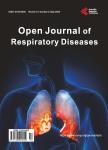Comparative Variability of Nasal Potential Difference Measurements in Human and Mice
Comparative Variability of Nasal Potential Difference Measurements in Human and Mice作者机构:Louvain Centre for Toxicology and Applied Pharmacology Institut de Recherche Clinique et Expérimentale Université Catholique de Louvain Brussels Belgium Pediatric Pulmonology & Cystic Fibrosis Unit St Luc University Hospital Brussels Belgium
出 版 物:《Open Journal of Respiratory Diseases》 (呼吸病期刊(英文))
年 卷 期:2012年第2卷第2期
页 面:43-56页
学科分类:1002[医学-临床医学] 100214[医学-肿瘤学] 10[医学]
主 题:Animal Models CFTR Cystic Fibrosis Nasal Potential Difference
摘 要:Background: Nasal potential difference (NPD) test has long been used to assist in the diagnosis of Cystic Fibrosis (CF) and more recently as an outcome measure in clinical trials of new CF therapies. This test has also been adapted to the mouse nose. Objectives: We aimed at evaluating variability of the NPD measurements in CF patients displaying two severe CFTR mutations and in sex-matched healthy controls. NPD recorded from F508del-CF and normal wild-type mice were also compared. Methods and results: In each setting, tests were performed by a single qualified operator. In the clinical setting, the latest standardized operation protocol of the CF foundation was followed. A total of 80 tracings were obtained from 10 patients (23.2 y;range 14 to 32) and 10 healthy subjects (34 y;range 24 to 53), each tested twice, in both nostrils. Two CF and two controls were excluded from the statistical data analysis due to the presence of a single non interpretable NPD tracing (4/80, 5%). To achieve equal sample size, tests were obtained from 8 CF mice and normal wild-type. Comprehensive multivariate analysis of paired data showed a good reproducibility of NPD parameters in the clinical and the preclinical setting;lower variability was observed in mice. However, 95% repeatability limits of NPD parameters were large indicating a large measurement error, poor precision and low within-subject repeatability. In both settings, chloride secretion was shown to be the most reproducible and repeatable parameter. Conclusion: In human as in mice, NPD showed good reproducibility but limited within-subject repeatability.



